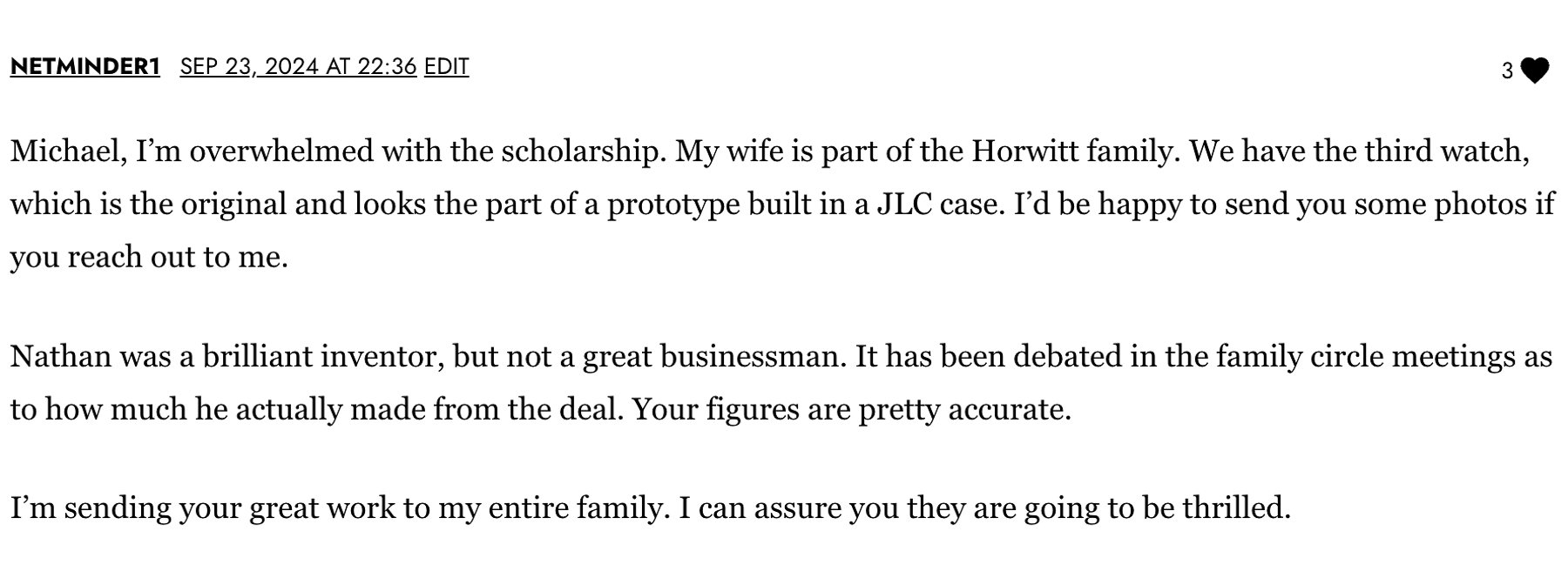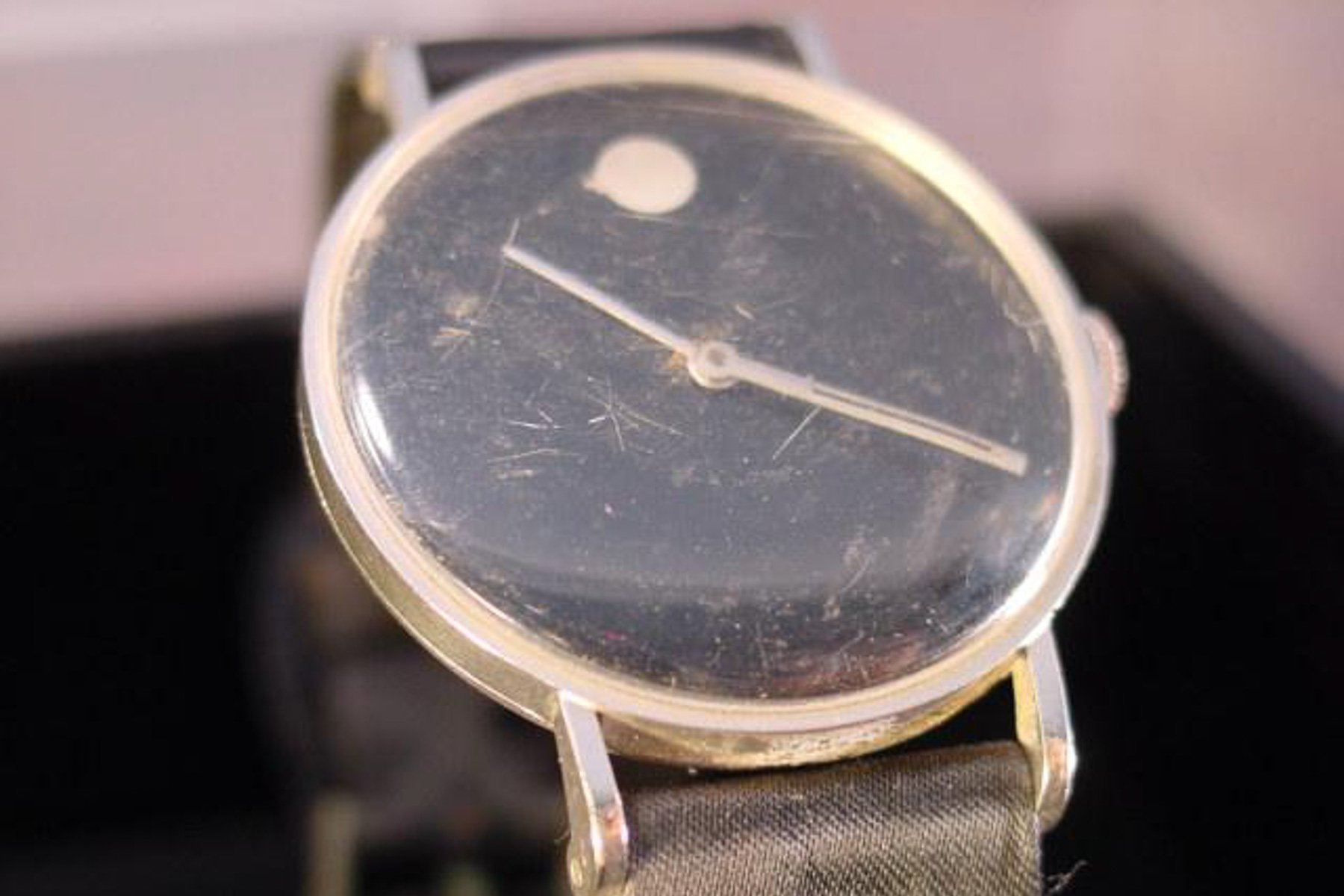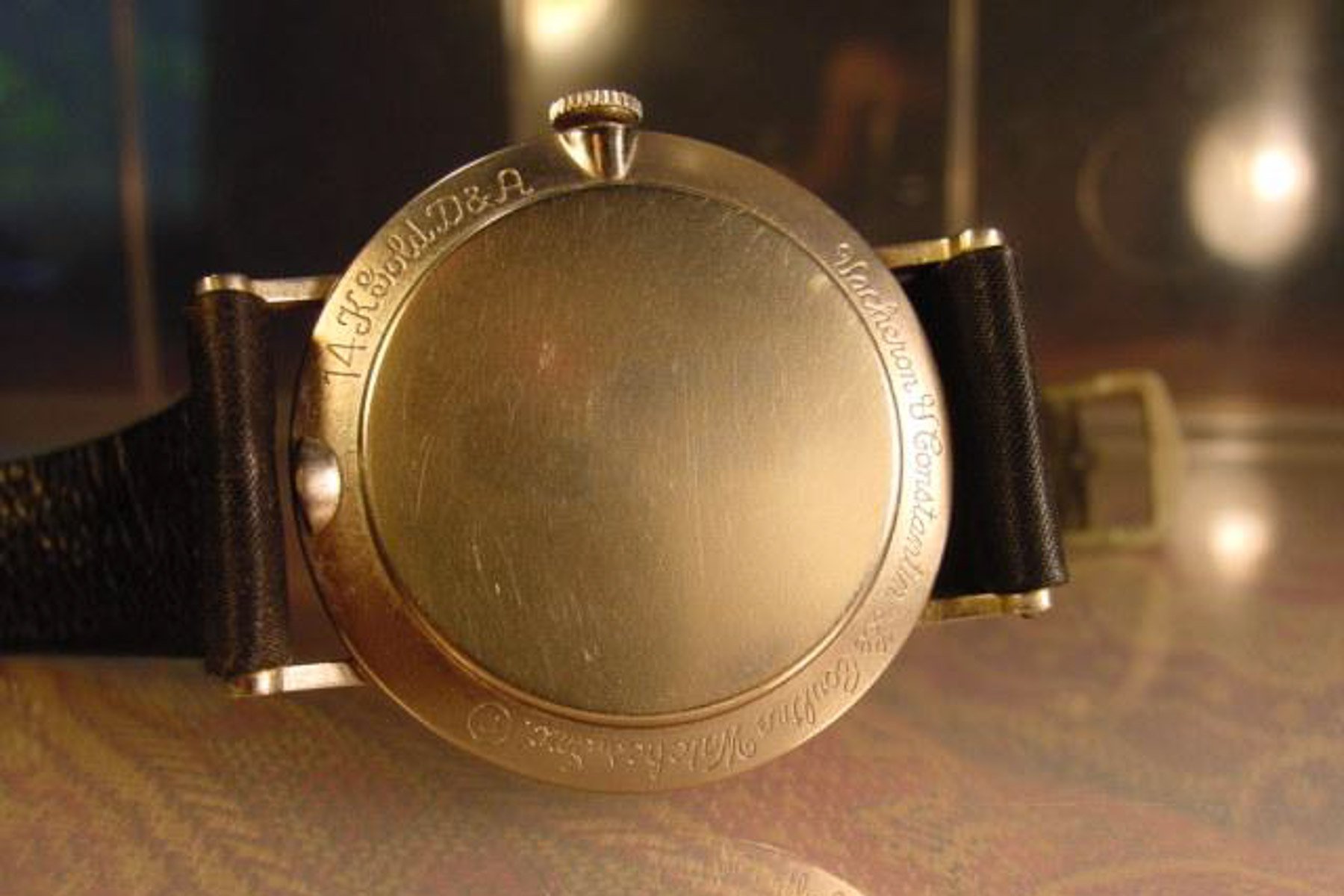Found: The Third Museum Watch Prototype
It’s been quite a week. After completing a 4,000-word article on the history of the Museum Watch, I reverted to covering the latest news and thinking about my next vintage story. However, little by little, the comments have trickled in on our site and over messages on Instagram. A noteworthy comment came in from a family member of Nathan George Horwitt who mentioned information on the third Museum Watch prototype. We’re excited to share what we believe are the first public photos of the watch.
Last week, I penned an article on the history of the vintage Movado Museum Watch. It was a lot of fun to write, and I hope it helped shed light on designer Nathan George Horwitt and the stories surrounding the watch’s early production. I know it also brought back some memories for folks in my age group who grew up seeing the watch everywhere. I spent time early in the article on the Museum Watch prototype models. Horwitt made three and gifted two to New York City museums. I’ll recount those briefly and move on to the big news.
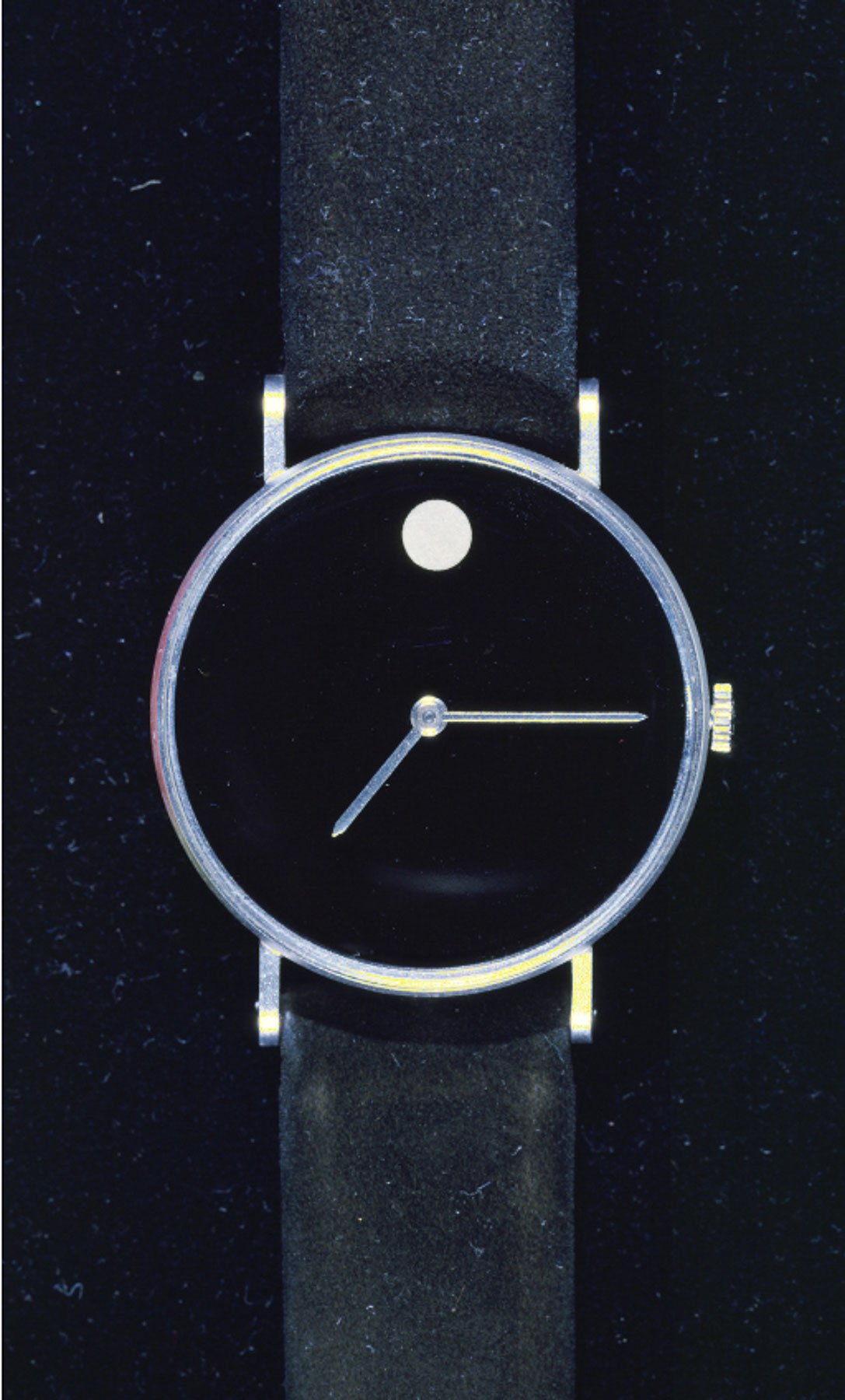
The 1947 Museum Watch Prototype by Nathan George Horwitt in the MoMA, New York City — Image: http://www.moma.org
Museum Watch prototype 1 — The MoMA
The first Museum Watch prototype resides in the permanent collection of the Museum of Modern Art in New York City. This watch is listed with a creation date of 1947. It was accepted by the museum in 1960 as a gift from Nathan George Horwitt. Sadly, the watch is not currently on display, and we are left with one photo on the MoMA website. It is listed as white gold with an enameled dial. The manufacturer is Vacheron & Constantin-Le Coultre Watches, Inc., Switzerland. While the movement was certainly made in Switzerland, Vacheron & Constantin-Le Coultre Watches, Inc. was actually the US distribution name. This semantic point will become relevant shortly.
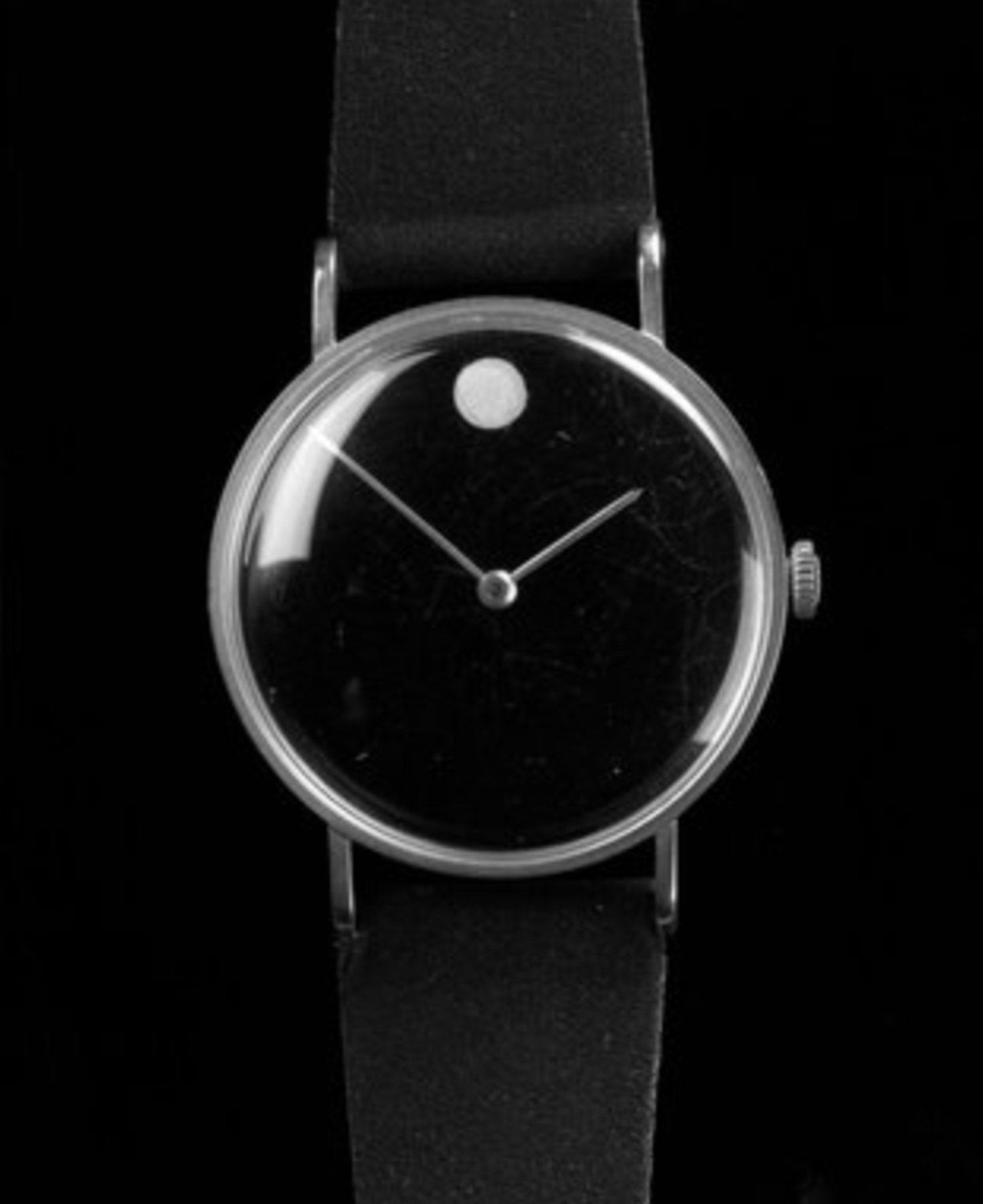
The 1955 Museum Watch Prototype by Nathan George Horwitt in the Brooklyn Museum, New York City — Image: http://www.brooklynmuseum.org
Museum Watch prototype 2 — The Brooklyn Museum
On December 18th, 1985, Horwitt donated the second Museum Watch prototype to the Brooklyn Museum in New York City. Interestingly, this watch is dated 1955. Are there differences between this watch and the MoMA piece? Indeed, the hands look much longer on this watch. We also do not know the diameters of either one.
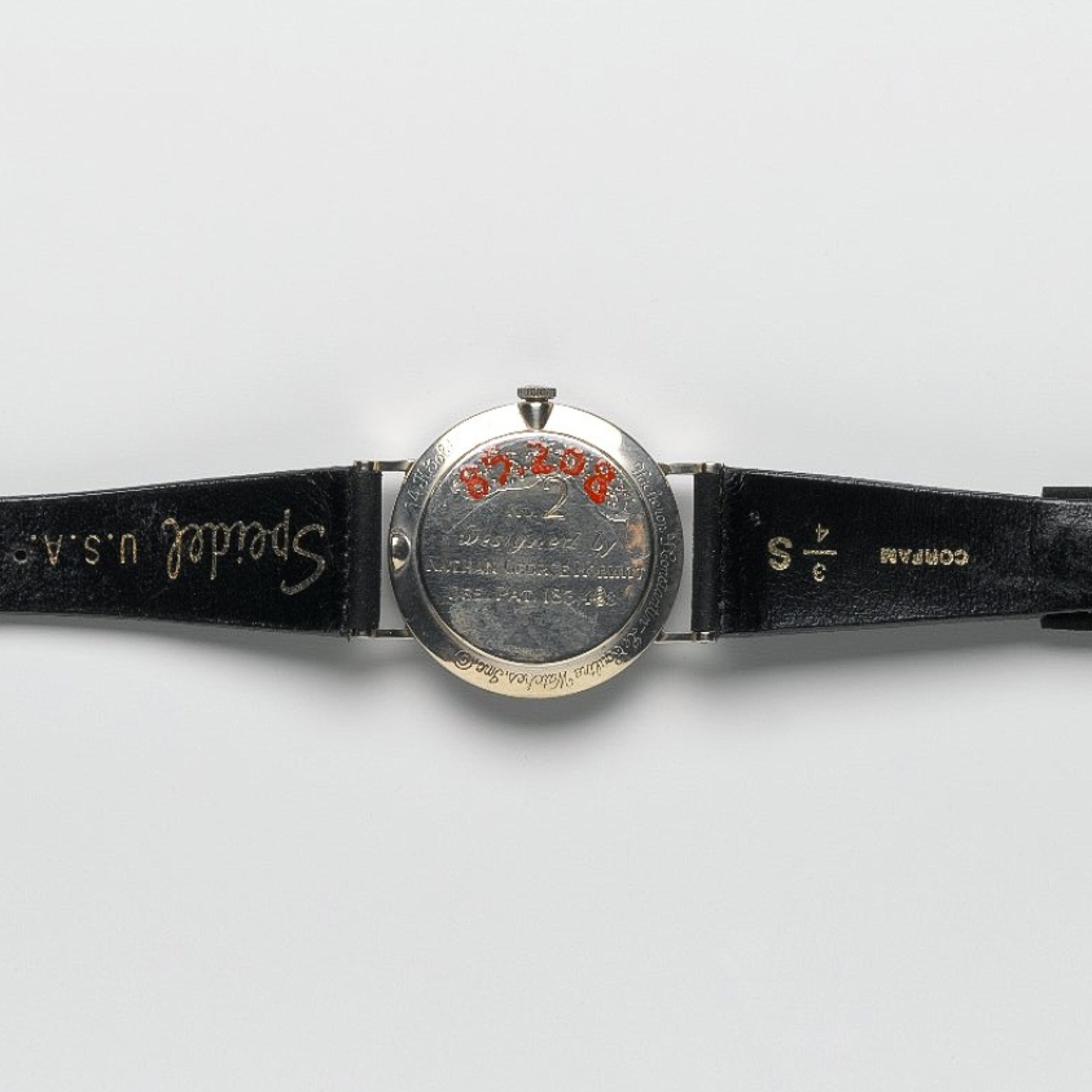
The 1955 Museum Watch Prototype by Nathan George Horwitt in the Brooklyn Museum, New York City — Image: http://www.brooklynmuseum.org
The Brooklyn Museum’s description tells us that the large “2” refers to the second piece. It’s also possible to see the US Design Patent number inscribed on the back. Clearly, this was added later because the patent was only issued in 1958. Finally, the case back also states “14K Gold D&A” and “Vacheron & Constantin-Le Coultre Watches, Inc.” In my original article, I stated that the prototypes were 18K white gold. I’ve updated the article with the correct information. What is D&A? This stands for DiVincenzo & Arienti, which was a Brooklyn, New York-based maker of watch cases. The company produced cases for Omega, LeCoultre, Longines, Vacheron, and more.
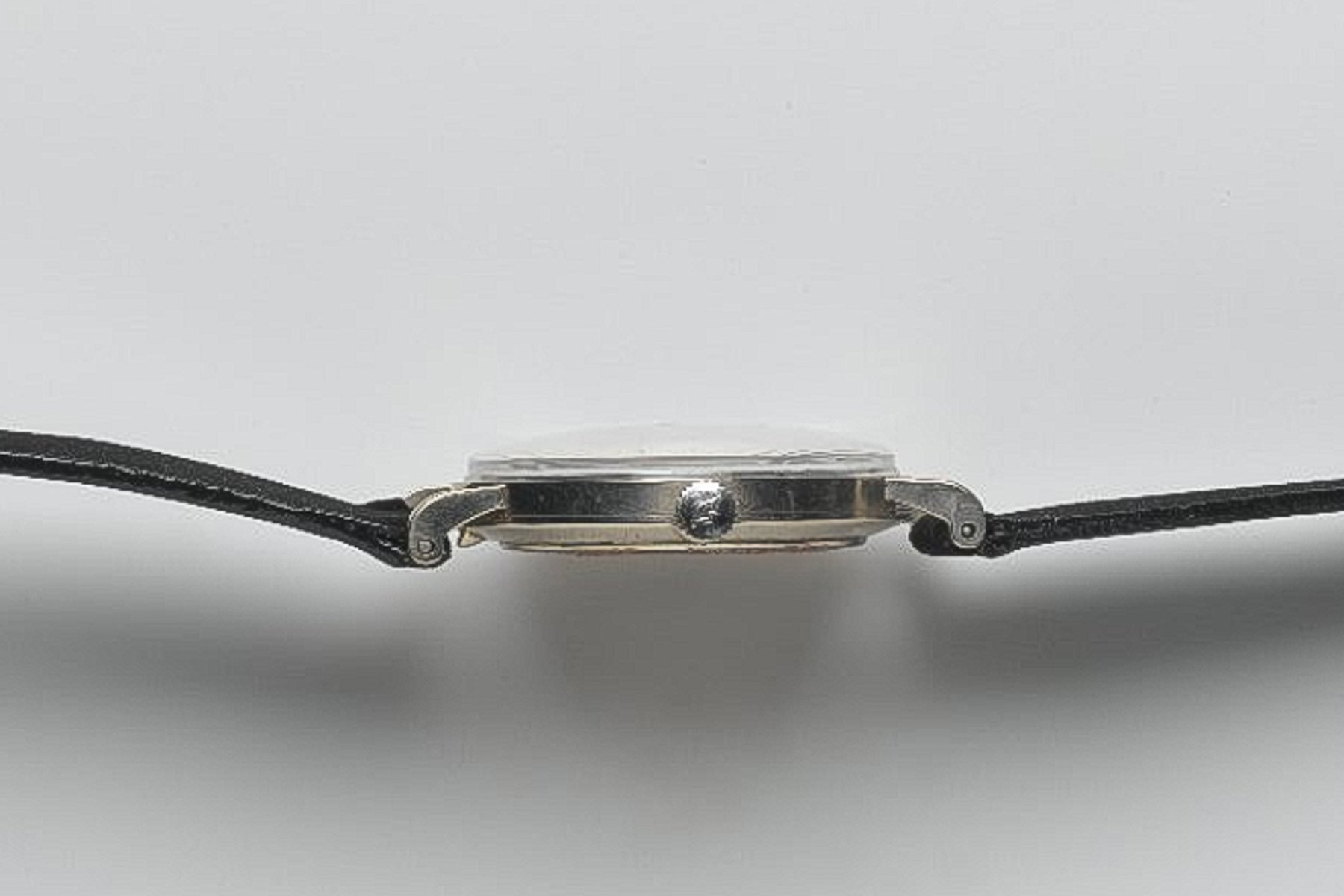
The 1955 Museum Watch Prototype by Nathan George Horwitt in the Brooklyn Museum, New York City — Image: http://www.brooklynmuseum.org
Finally, a side shot of the second Museum Watch prototype shows something peculiar. The watch, despite its Vacheron roots, carries a later Movado crown with the “Fedora” logo. Perhaps Movado used the watch in ’60s promotional displays and decided to add its logo. Or maybe the crown required replacement at some point.
The “missing” Museum Watch prototype 3
The day after the original article was published, I received a comment from one of Nathan Horwitt’s relatives. I was happy to see that the article was received in the respectful manner that I intended. However, there was more. The family member stated that the third Museum Watch prototype was still in the family. He even offered to send photographs and permitted me to use them in a follow-up article. A day later, they arrived! The photos are from the early 2000s, and the watch has moved to a different family member, but it’s very much alive and well.
As far as I know, this is the first time this watch has been shown to the public even though it has been hiding in plain sight since it was likely created in 1947. We don’t know if it was the first model Horwitt created, but it is one of the original three. This is the watch Nathan George Horwitt kept for himself, and it looks like he wore it regularly. The 14K white gold case still looks decent, but the enameled dial shows signs of the brass base material. Also, the minute hand looks like it has been changed to something more modern.
The case back is also consistent with the other watches. It shows the 14K gold composition and the D&A case manufacturer’s markings. Finally, the “Vacheron & Constantin-Le Coultre Watches, Inc.” script is consistent with the first two prototypes.
Final thoughts
Does news of the third Museum Watch prototype have the same impact as finding John Lennon’s Patek? Maybe not, but it’s nice to know that the watch still exists and is owned by the Horwitt family. As I said in my original article, this was an impactful watch. It’s a design that Movado still produces today and is among the most recognizable modern watch designs in history. Hopefully, you enjoyed this unveiling!
Thank you again to the Horwitt family member who contacted me and graciously sent the photos of the original prototype watch.

